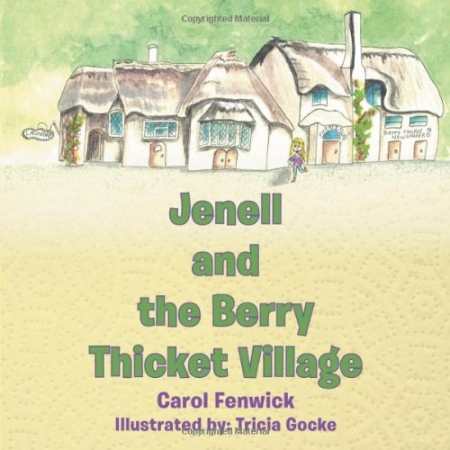Jenell and the Berry Thicket Village
Virtually all literature can be traced back to its influences: if one combined equal amounts of Alice in Wonderland, any of the countless children’s books featuring mice as lead characters, and the Smurfs, the result might be something like Carol Fenwick’s Jenell and the Berry Thicket Village.
In the story, nine-year-old Jenell accidentally breaks her mother’s vase. Upset when she is sent to her room as punishment, Jenell sneaks out in search of a legendary mouse village, where the mice live just like people do. After shrinking down to mouse size and rescuing some young mice from drowning, Jenell is thanked and befriended by the village elders before heading home, wiser for her experiences.
Aside from magazine and newspaper articles, Carol Fenwick has published another children’s book simultaneously, Jennell and the Horse in the Enchanted Valley, whose title hints at the possibility of more books to come featuring Jenell.
Jenell and the Berry Thicket Village‘s ten illustrations are somewhat crude in style, but they are effective and even charming at times. The book suffers some from its layout—the text pages are overly dense, and the lines might have been better spaced to be easier on the eyes and less intimidating to young readers. Fenwick’s writing, however, is right on track, and she aptly conveys the settings and characters’ feelings.
There is a nice symmetry to Jenell’s adventure. The boy mice who nearly drown do so after disobeying their parents, much as Jenell disobeys her own mother early in the story. Thus, Jenell is offered a clear example of why it’s important for children to mind their parents’ rules.
But Jenell is a simple character, often seeming like she’s drawn from a parent’s imagination, not from a child’s. She speaks in perfectly angelic, somewhat stilted, deliver-the-moral lines, as when she explains the similarities between mouse children and human children: “We sometimes feel we’re being treated unfairly when we’re disciplined. I have learned a valuable lesson here today and am anxious to try to be better when I get back home.” Fenwick seems to be striving for a fairy-tale feel rather than any kind of realism, but the dialogue still has a bit of a robotic quality to it.
There are some unanswered questions in the story, notably the matter of how Jenell is able to shrink down to mouse size and then return to normal size. Is it just her imagination at work? Near the end of the story, she notes some scratches on her arms, which hint that her experiences were real. But while the question of “how” is one that many children might ask, it’s probably not something that will distract them from their overall enjoyment of the story for more than a moment or two.
Reviewed by
Peter Dabbene
Disclosure: This article is not an endorsement, but a review. The publisher of this book provided free copies of the book and paid a small fee to have their book reviewed by a professional reviewer. Foreword Reviews and Clarion Reviews make no guarantee that the publisher will receive a positive review. Foreword Magazine, Inc. is disclosing this in accordance with the Federal Trade Commission’s 16 CFR, Part 255.

